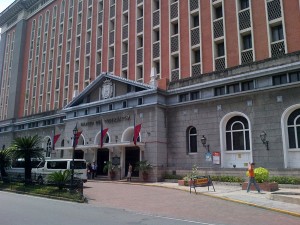MANILA, Philippines—The Commission on Elections (Comelec) will open for review the source code of the old precinct count optical scan (PCOS) machines as well as the new voting units one year ahead of the May 2016 national elections.
Acting Comelec Chair Christian Robert Lim said the poll body intends to begin the review of the source codes of the existing PCOS as well as the optical mark reader (OMR) and direct recording electronic (DRE), which are expected to be leased as early as May 2015.
“We are scheduled to open the source code review on May 15, 2015—that’s one year before the elections,” said Lim in a press briefing at the Bangko Sentral ng Pilipinas (BSP) on Friday during the temporary transfer of the safe of the 2010 and 2013 PCOS source codes.
The source codes’ Mosler safe was temporarily transferred to another secured area at the BSP to give way to the installation of the partitions in the main vault.
Comelec and BSP officials said the source codes’ Mosler safe will “not be opened, and it shall remain secured since it is still inside the main vault, directly within view of the vault’s closed circuit television cameras.”
Source code
The source code is the program instructions that will define how the PCOS machines will operate.
Lim said the review of the PCOS source code would be crucial as the Comelec is set to reuse the 82,000 PCOS machines in the 2016 polls apart from the new voting machines the poll body intends to lease.
The poll automation law provides that the Comelec should make the source code “available and open to any interested political party or groups, which may conduct their own review.”
During the 2013 elections, the poll agency received criticisms for opening the source code review only less than a week before the election day.
Minimize criticisms
Comelec spokesperson James Jimenez said opening the source code review a year before the elections would hopefully minimize criticisms from poll watchdog groups claiming that the Comelec is not complying with the law.
“Right now, we are still studying the possibility of upgrading some facets of the old machines. It has yet to be decided, but whatever changes are made to the PCOS, they will definitely have to undergo a source code review of some sort,” said Jimenez.
As for the new voting machines, Lim said the poll body required the would-be service providers of OMR and DRE machines to escrow their respective source codes immediately.
A total of 23,000 OMR voting units are set to be used as supplement to the more than 80,000 existing PCOS machines in the 2016 elections. Add to that the more than 400 DRE units that will be pilot-tested by the poll body in the municipality of Pateros.


